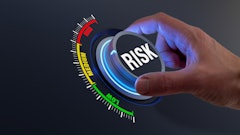
The pressure of margins and growth continues to increase across all industries, especially in the procurement process. According to Gartner, “By 2021, 55 percent of technology procurement staff will require additional business, digital and analytical skills to realize business innovation and growth.” To succeed in this competitive environment, CPOs must align their goals and strategies with larger business goals, requiring them to change how their procurement and sourcing teams function.
A fresh perspective on the procurement process
Procurement teams are accustomed to focusing their key performance indicators (KPIs) solely on cost savings. In order to stay competitive in today’s hyper-paced business landscape, CPOs and sourcing teams must reframe the procurement process and evaluate how success should be measured alongside their company’s growth goals.
“It’s not just about cost savings–which was the traditional mindset of the procurement function. It’s about continually improving and re-evaluating how we’re buying to make sure we’re getting the best business outcomes,” Neil Aronson, head of global strategic sourcing for Uber says.
As new automated technology and solutions are introduced, teams must remain flexible and shift accordingly to track and achieve success. For example, teams who have focused their attention on where a project or assignment is in the pipeline have opened doors to new opportunities. This can uncover more transparency on why projects are slipping and provide an opportunity to produce more realistic timelines for deliveries. Even more importantly, a company’s executive team will likely not support transformation plans without a clear understanding of what those KPIs are, and how they will be measured.
To actively monitor goals and show a benefit to executives, teams should ask themselves these questions:
- What’s working well? How did we identify and measure that?
- Are there any bottlenecks in our current process? If so, where?
- What investments are we prioritizing, and how can we improve them?
With the proper automated sourcing tools in place that can provide a deep dive into analytics, procurement teams can focus on answering these questions by prioritizing high-adoption and accelerated time-to-value risks, and customizing the procurement journey. To kickstart your transformation, here are seven new KPIs to consider, and why they should be measured. Procurement teams can use these as tools to help measure and showcase company success.
KPI 1: Rate of opportunity creation
Essentially, this will help define the capacity at which the team can operate with current resources by establishing the impact on procurement’s resource capacity plan.
KPI 2: Percent of purchases in budget
Based on new purchases, this KPI can help procurement teams identify gaps in the pipeline process through their resource capacity plan.
KPI 3: Project inbound vs. completion/cancellation rate
This is essential to the overall business, not just the procurement team. Teams should measure inbound projects from completed to canceled in order to quantify value add and the business outcome.
KPI 4: Project duration by state
With this KPI, procurement teams can uncover bottlenecks, resource challenges and other factors by understanding how long a project takes to complete.
KPI 5: Efficiency per employee and group
Procurement teams can better support the global enterprise when they can measure ultimate business outcomes next to regional performance, category and commodity.
KPI 6: Supplier delivery vs. contractual commitment
Teams can evaluate supplier performance and effectiveness of the relationship when they measure the supplier delivery of goods, services and pricing against existing contracts.
KPI 7: Financial impact
There are three components to consider under our final KPI: savings vs. addressable spend, percent of savings on sourced spend, and addressable spend under the influence. Why do we break this KPI out into three sections? Enterprises have a holistic picture of the impact that procurement has on addressable spend.
Gartner states that procurement organizations that effectively utilize automation and analytics tools see:
● 54 percent increase in visibility
● 47 percent increase in execution speed
● 37 percent increase in spend compliance
● 21 percent increase in savings rate.
By refocusing current KPIs to align with the overall business, procurement teams can attract more support internally, ultimately leading to collaborative business impact.
“With business changing so fast, the old ways of doing things no longer suffice,” says Walter Charles, chief procurement officer at Allergan. “Procurement chiefs must embrace new ideas, new technologies and new models of execution to deliver the value they are being asked to contribute to their organizations.”

















